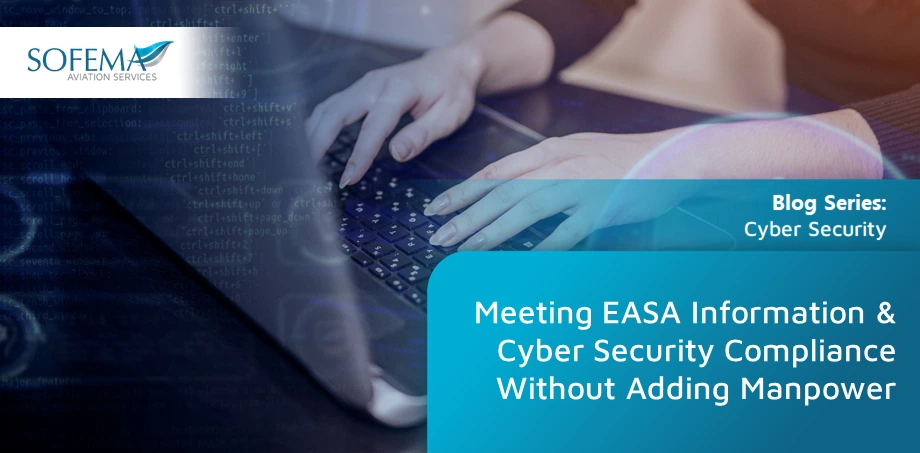Sofema Online (SOL) takes a deep dive into meeting EASA Information Security & implementation challenges without the need for additional manpower.
Introduction
IT and cybersecurity are so specific that companies often have to hire new people or even hire outside people to set up, manage and test/audit. Concerns regarding the reliance on external cybersecurity consultants and contractors in EASA Part 145 organizations are valid and shared among many stakeholders in the industry.
The SAS Part 145 Cyber Security Implementation course you provided covers third-party cybersecurity risks extensively and highlights supply chain security as a critical concern for compliance with Regulation (EU) 2023/203.
Instead of hiring additional personnel or outsourcing, EASA Part 145 organizations can:
Train existing staff in cybersecurity awareness and ISMS implementation
Embed cybersecurity into SMS, quality, and compliance roles
Use automated tools for monitoring, detection, and reporting
Control third-party access and strengthen supply chain security
This approach ensures compliance without increasing overhead costs or exposing critical IT systems to external risks.
Key Points on Managing Cyber Security Without Hiring Additional Manpower
- Leverage Existing Personnel with Targeted Training
- EASA does not mandate hiring dedicated cybersecurity personnel. Instead, it requires integrating cybersecurity into existing Safety Management Systems (SMS).
- Internal staff can be trained to manage Information Security Management Systems (ISMS), risk assessment, and compliance.
- Training programs, such as those offered by Sofema Online, can upskill quality managers, safety officers, and IT personnel to handle cybersecurity without expanding headcount.
- Integrate Cybersecurity into Existing SMS & Compliance Roles
- Cybersecurity can be embedded into existing quality assurance, compliance, and safety management teams to ensure efficiency without duplication of roles.
- The Accountable Manager, Nominated Post Holder, and Compliance/Safety Manager already have defined cybersecurity duties under the regulation, removing the need for additional specialists.
- Implement Risk-Based Approach with Automated Monitoring
- Instead of hiring dedicated cybersecurity staff, organizations can use intrusion detection systems (IDS), automated vulnerability scanning, and endpoint security tools to monitor threats.
- These tools reduce dependency on external consultants by enabling real-time monitoring and early detection of cyber threats.
- Control Third-Party & Supplier Cybersecurity Risks
- External consultants and suppliers pose a risk if they have unrestricted access to critical IT systems, aircraft maintenance records, or operational data.
- EASA Part 145 organizations should implement strict access control measures, such as:
- Zero Trust Architecture (assume breach, restrict access by role).
- Multi-Factor Authentication (MFA) for remote and privileged access.
- Supplier Cybersecurity Vetting (third-party risk assessments and contractual obligations for cybersecurity compliance).
- Strengthen Incident Response Without External Dependence
- A clear internal response plan, including staff awareness training and simulation exercises, ensures rapid action without relying on expensive external auditors.
- Internal reporting systems (aligned with ECCAIRS methodology) allow employees to escalate cybersecurity issues within the organization rather than exposing them to outsiders.
Shared Concerns Among Industry Stakeholders
- Supply Chain Security Risks
- The NIS2 Directive (EU) 2022/2555 highlights the vulnerabilities introduced by third-party providers, requiring organizations to evaluate and control vendor access to critical systems.
- The SAS course material specifically warns about third-party cybersecurity risks in maintenance environments.
- Threats from External IT Consultants
- External cybersecurity consultants often have privileged access, making them a potential attack vector.
- Best practice is to limit consultant access strictly and ensure that internal personnel oversee all cybersecurity implementations.
- Regulatory Compliance Without New Hiring
- EASA acknowledges that many Part 145 organizations lack in-house cybersecurity expertise but does not mandate recruitment.
- Instead, compliance can be achieved through training existing staff, adopting automated tools, and integrating cybersecurity into SMS/quality assurance functions.
EASA Part 145 Cyber Security Compliance Checklist
(Implementing Regulation (EU) 2023/203 without Additional Hiring)
This checklist helps EASA Part 145 organizations integrate cybersecurity into existing SMS, Quality, and Compliance functions, reducing reliance on external consultants.
- Establish Internal Cybersecurity Governance
Assign Responsibilities
- Designate an Information Security Focal Point (ISFP) (can be an existing Quality Manager, Safety Officer, or IT lead).
- Integrate cybersecurity into Quality & Safety Management System (SMS).
- Define cybersecurity roles in job descriptions of existing staff.
Develop Cybersecurity Policies & Procedures
- Establish an Information Security Management System (ISMS) aligned with EASA Part 145 & ISO 27001.
- Create clear cybersecurity policies for:
- Access Control
- Incident Response
- Data Protection & Privacy
- Supplier Cybersecurity Vetting
- Employee Cyber Awareness
- Define reporting structures for cybersecurity incidents.
Limit External Access & Third-Party Risks
- Implement Zero Trust Architecture (No external party gets unrestricted access).
- Require Multi-Factor Authentication (MFA) for IT administrators & remote workers.
- Conduct third-party cybersecurity risk assessments for suppliers and IT contractors.
- Implement Cybersecurity Controls (Using Existing IT Resources)
Protect IT & Maintenance Systems
- Secure Maintenance Information Systems (MIS) & Part 145 record-keeping systems.
- Apply end-to-end encryption for sensitive data (storage & transmission).
- Use network segmentation (separate critical maintenance networks from corporate IT).
- Conduct regular software patching & vulnerability scanning.
Restrict Unauthorized Access
- Implement Role-Based Access Control (RBAC) (limit access to “need-to-know” basis).
- Use automated intrusion detection tools (IDS/IPS) to monitor systems.
- Establish privileged access management (PAM) (control admin accounts).
Strengthen Cybersecurity Awareness
- Provide basic cybersecurity training for all employees.
- Conduct monthly phishing simulation exercises to prevent social engineering attacks.
- Assign cyber hygiene responsibilities (password management, secure file handling).
- Conduct Cyber Risk Assessments & Audits
Regular Cyber Security Risk Assessment
- Map all critical IT systems & data flows (maintenance records, software, supplier access).
- Identify potential vulnerabilities (legacy systems, third-party software).
- Classify risks using EASA-approved risk assessment methodology.
- Mitigate unacceptable risks using:
- Firewalls & Intrusion Detection
- Regular penetration testing (can be automated, no need for external consultants)
- Backups & Disaster Recovery Plans
Internal Cyber Audits (Integrated with Quality Audits)
- Conduct cybersecurity self-audits every 6 months.
- Align audits with EASA Part 145 & ISO 27001 standards.
- Ensure supplier compliance with cybersecurity policies.
- Establish Incident Detection, Response & Reporting
Develop Cyber Security Incident Response Plan
- Create a step-by-step Cyber Incident Response Plan (IRP) based on EASA IS.I.OR.220.
- Define incident categories (e.g., phishing, ransomware, unauthorized access).
- Establish internal escalation process (who gets notified & when).
Incident Detection & Response
- Enable real-time monitoring of IT networks (using automated detection tools).
- Conduct “tabletop” cyberattack drills every 6 months (simulated response scenarios).
- Establish a forensic investigation procedure (to analyze root causes & prevent recurrence).
Regulatory Reporting (Internal & External)
- Report high-risk incidents to the National Aviation Authority (NAA) within 72 hours.
- Use EASA-approved cybersecurity reporting format (aligned with ECCAIRS).
- Maintain detailed incident logs for 5 years (per IS.I.OR.245).
- Continuous Improvement & Compliance Monitoring
Cybersecurity Performance Monitoring
- Track cyber incidents & trends (to identify weaknesses).
- Benchmark cybersecurity maturity using ISO 27001 risk assessment models.
- Periodically update cybersecurity policies based on new threats.
Integrate Cyber Security into SMS & Change Management
- Ensure cybersecurity is part of safety risk assessments & safety committees.
- Apply cyber risk evaluation to any system changes (e.g., new software, cloud migration).
- Regularly review and update ISMS in compliance with EASA Part 145 & Regulation (EU) 2023/203.
Implementation Timeline (Without Hiring Extra Staff)
Phase 1: Setup (0-2 months)
Assign cybersecurity focal point & responsibilities
Establish cybersecurity policies & ISMS
Secure supplier access & limit third-party risks
Phase 2: Cyber Risk Assessments & Controls (2-6 months)
Conduct cybersecurity risk assessment
Implement security controls (firewalls, encryption, MFA)
Train employees on cybersecurity awareness
Phase 3: Incident Response & Reporting (6-9 months)
Develop & test Cyber Incident Response Plan (IRP)
Set up internal & external reporting structures
Phase 4: Audits & Continuous Monitoring (9-12 months & ongoing)
Conduct first internal cyber audit
Start continuous monitoring & update policies
Conclusion
By following this checklist, EASA Part 145 organizations can achieve full cybersecurity compliance without hiring new staff by:
Training existing personnel instead of hiring external consultants
Integrating cybersecurity into existing SMS & Quality functions
Using automated cybersecurity tools to minimize workload
Limiting third-party access & controlling supply chain risks
This reduces dependency on external cybersecurity firms, keeping your organization’s data, maintenance records, and IT infrastructure secure while staying compliant with Regulation (EU) 2023/203.
Next Steps
Follow this link to our Library to find & download related documents for Free.
Sofema Aviation Services and Sofema Online provide classroom, webinar, and online training.
For further details, please visit our websites or email team@sassofia.com for comments or questions.
Tags:
Managing Cybersecurity, Cybersecurity Awareness, end-to-end encryption, Zero Trust Architecture, Multi-Factor Authentication (MFA), Information Security Focal Point (ISFP), NIS2 Directive (EU) 2022/2555, Automated Monitoring, defined cybersecurity duties, cybersecurity personnel, EASA, ISMS implementation, third-party cybersecurity risks, BlogSeries, EASA Part 145 organizations, ISO 27001, Risk-based approach, Information Security, SAS blogs





